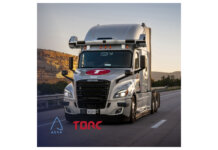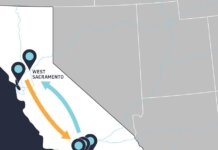The U.S. Environmental Protection Agency has issued the latest round of funding from the Clean School Bus Rebate Program with up to $965 million available to school districts. The Biden-Harris administration’s Investing in America agenda continues to accelerate the transition of the nearly 500,000 school buses in America to cleaner technologies, helping to protect the more than 25 million children who ride a school bus every day from air pollution.
Under the Clean School Bus Program’s multiple grant and rebate funding opportunities to date, EPA has awarded almost $3 billion to fund approximately 8,700 school bus replacements, approximately 95% of which are zero-emission, battery electric. Funding has been awarded to nearly 1,300 school districts in nearly all 50 states and Washington D.C., along with several federally recognized tribes and U.S. territories, many of which are identified as priority areas serving low-income, rural, and/or tribal students.
“Over the past three years, we’ve seen tremendous interest from schools across the country to upgrade to clean and zero-emission buses,” says EPA Administrator Michael S. Regan. “Thousands of new buses on the road mean our children are breathing cleaner air on their way to and from school, their communities are seeing cleaner air and less climate pollution, and schools are supporting good paying American jobs.”
Applications for this year’s Clean School Bus Rebate Program are due on the EPA online portal by 4 p.m. Eastern time Jan. 9, 2025. Applicants can request up to $325,000 per bus for up to 50 buses per application, an increase in the total buses per project in response to stakeholder feedback for larger projects to help achieve faster fleet turnover. Funds can be used to cover bus and infrastructure costs for awardees requesting electric school buses, as well as eligible training costs for bus drivers, electricians and others working with the new buses or infrastructure.
Selectees may also be eligible for Inflation Reduction Act tax credits applicable to their bus and infrastructure purchases. For example, the clean vehicle tax credits for qualifying school buses are worth up to $40,000. Narrowing the cost difference between clean school buses and diesel school buses remains an integral goal of the Clean School Bus Program. The agency adjusted electric school bus funding levels in this rebate program to help stretch funding further and drive down long-term electric school bus costs.
EPA is committed to ensuring the Clean School Bus Program advances environmental justice and delivers on President Biden’s Justice40 Initiative, which sets a goal that 40% of the overall benefits of certain federal investments flow to disadvantaged communities that are marginalized by underinvestment and overburdened by pollution. EPA will prioritize applications that replace buses serving low-income, rural and tribal students. Large school districts with communities of concentrated poverty may also submit documentation to be prioritized if their application focuses on clean school buses serving those communities.
It’s a priority for EPA that school districts prepare for how to support their workers — including bus drivers, mechanics, and other essential personnel — to safely operate and maintain the new buses and maintain high labor standards. As a result, workforce training is an eligible use of program funds, and EPA strongly encourages school districts to develop workforce plans in partnership with their employees to help them prepare for the transition to clean school buses.
EPA is working closely with the Joint Office of Energy and Transportation (JOET) of the U.S. Department of Energy and U.S. Department of Transportation to provide school districts with support as they plan for and implement adding electric school buses to their fleets. Clean School Bus Program applicants and selectees can receive free technical assistance from JOET through resources such as one-on-one meetings and public webinars. EPA and JOET also can connect school districts with local utility providers to assist them in the infrastructure planning necessary for projects including battery electric school buses.
Proactive and ongoing communication with key stakeholders such as school boards and local utilities is critical to successful bus and infrastructure deployment. This rebate cycle incorporates several best practices to ensure that these key stakeholders are engaged and coordinating effectively. More information regarding required application materials is available in the Program Guide on the Clean School Bus Rebate Program webpage.
EPA is accepting rebate applications from Sept. 26, 2024, until Jan. 9, 2025.








Your tax dollars at work, working for you. To find out more about EVs please go to http://www.pluginamerica.org and http://www.myeva.org (find a local chapter near you). Thank you.